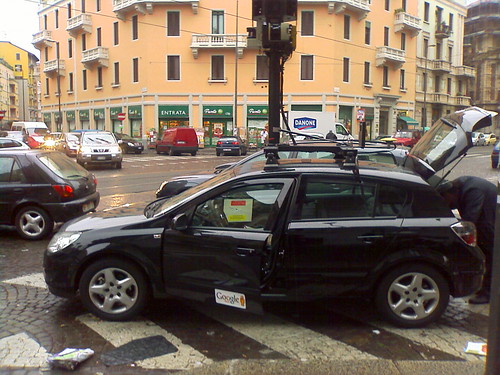GetRobo has an interesting interview with Brian Gerkey of Willow Garage. Willow Garage are a strange outfit – a not-for-profit company developing open source robotic hardware and software, closely linked to Stanford. They’re funded privately by a dot com millionaire. They started with several projects including autonomous cars and autonomous boats, but now concentrate on building a new robot called PR2.
The key thing PR2 is designed to support is mobile manipulation. Basically research robots right now come in two varieties – sensors on wheels, that move about but can’t interact with anything, and fixed robotic arms, that manipulate objects but are rooted in place. A few research groups have build mobile manipulation systems where the robot can both move about and interact with objects, but the barrier to entry here is really high. There’s a massive amount of infrastructure you need to get a decent mobile manipulation platform going – navigation, obstacle avoidance, grasping, cross-calibration, etc. As a result, there are very very few researchers in this area. This is a terrible shame, because there are all sorts of interesting possibilities opened up by having a robot that can both move and interact. Willow Garage’s PR2 is designed to fill the gap – an off-the-shelf system that provides basic mobile manipulation capabilities.
Brian: We have a set of demos that we hope that the robot can do out of the box. So things like basic navigation around the environment so that it doesn’t run into things and basic motion planning with the arms, basic identifying which is looking at an object and picking it out from sitting on the table and picking it up and moving it somewhere. So the idea is that it should have some basic mobile manipulation capabilities so that the researcher who’s interested in object recognition doesn’t have to touch the arm part in order to make the object recognizer better. The arm part is not to say that it can be improved but good enough.
If they can pull this off it’ll be great for robotics research. All the pieces don’t have to be perfect, just enough so that say a computer vision group could start exploring interactive visual learning without having to worry too much about arm kinematics, or a manipulation group could experiment on a mobile platform without having to write a SLAM engine.
Another interesting part of the interview was the discussion of software standards. Brian is one of the lead authors of Player/Stage, the most popular robot OS. Player is popular, but very far from universal – there are nearly as many robot OSes as there are robot research groups (e.g. CARMEN, Orca, MRPT, MOOS, Orocos, CLARAty, MS Robotics Studio, etc, etc). It seems PR2 will have yet another OS, for which there are no apologies:
I think it’s probably still too early in robotics to come up with a standard. I don’t think we have enough deployed systems that do real work to have a meaningful standard. Most of the complex robots we have are in research labs. A research lab is the first place we throw away a standard. They’re building the next thing. So in robotics labs, a standard will be of not much use. They are much more useful when you get to the commercialization side to build interoperable piece. And at that point we may want to talk about standards and I think it’s still a little early. Right now I’m much more interested in getting a large user community and large developer community. I’m less interested in whether it’s blessed as a standard by a standard’s body.
Anyone working in robotics will recognise the truth of this. Very much a sensible attitude for the moment.
